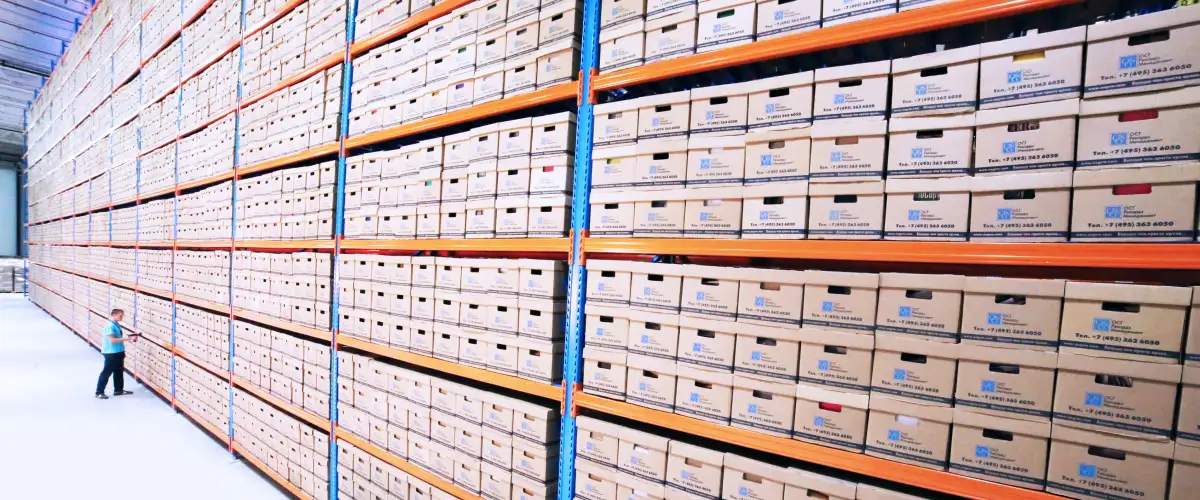What is inventory and how do you bookkeep it?
By Rackbeat November 9, 2021

When it comes to keeping an overview of the assets in your business, inventory is one of the most important elements. Inventory isn’t only storing materials and merchandise in a warehouse: it is an essential part of keeping your books in order for the business.
But what does inventory really cover, and how do you bookkeep it? Read on and get your questions answered here.
What does inventory cover?
The Inventory primarily covers the wares that are stored in the business’ physical warehouse. What is counted in inventory can be raw materials, building materials, merchandise etc. – in short, all material and products in the warehouse that can be sold.
However, parts of the inventory can be found in other places than the shelves of the warehouse. An example of this can be products you have bought, that is delivered somewhere else than the business’ main address. Although the products are not on the shelves of your physical warehouse, they can still be part of your inventory.
Products that are on display and for sale at a business partner, but your business still owns, are usually still part of your inventory. That is why it is important to keep an overview of which products belong to your inventory – especially when not all wares are physically available.
How is an inventory bookkept?
When you buy a product that is sold immediately, the order needs to be bookkept directly into the inventory.
If you buy a product that isn’t immediately sold, but instead needs to be put in the warehouse, you can show in your bookkeeping that the wares is part of your inventory. That way, you can always see that the products that the products still carry business value and should be counted towards your assets.
To bookkeep your inventory you need to create an account called “Inventory”. The account needs to be placed in the balance under assets, where you also place Operational costs, and Bank. This account is needed to bookkeep the purchasing of products in your warehouse – meaning that the purchase isn’t bookkept as an expense.
When you pay for the products you should credit the amount from the Bank-account. To bookkeep the purchase, you need to write the amount you’ve paid in debit on the Inventory-account. If there are taxes applied to the product that you can deduct, the account also needs to calculate tax.
Doing inventory and product adjustment
At least once a year, you need to do inventory. You do this by counting all the wares in the warehouse and writing down how much of every single item you have in stock.
Is there a discrepancy between what you have bookkept and what you’ve counted for inventory, you need to bookkeep the difference in the income statement in an account for product adjustment. That means that the inventory needs to be congruent with the actual count in your bookkeeping.
If you want to be sure that you keep the full overview of your inventory, all activities that have an influence on the number of products in the warehouse, including their value needs, to be bookkept.
This is relevant when you:
- Sell a product from the warehouse: In the bookkeeping, the product needs to be moved out of the inventory. The bookkeeping also needs to show the expense for the purchase, and the turnover value for the sale to the customer.
- Register losses: If there are fewer products in stock than there should be, according to the inventory-account, this needs to be bookkept on an account for warehouse losses.
- Write down products: If your products have lost value due to market fluctuations or wrong purchasing, this needs to be bookkept as a write-down of inventory on the income statement.
When you’ve counted and bookkept everything, and all product adjustments are logged in the accounts for the inventory, you can see the value of your purchased products in the account. The books for the inventory will also show the value of the sold products, as well as the value of the products that have been removed from the warehouse without being sold.
Get the full overview of your inventory with the proper inventory organization
Now you have a better idea of what an inventory constitutes and how you bookkeep it. However, how do you organize your inventory so your business benefits from the space and a more efficient order flow?
You will find the answers to that in this short and sharp blog: “Guide to Warehouse and Inventory Organization for your Business.”



